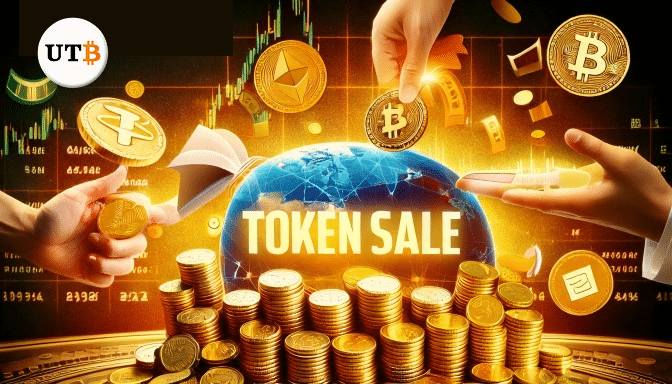Key Takeaways
- Bridges enable complex interactions like DApps using resources from multiple blockchains, enabling innovation in the blockchain ecosystem.
- Blockchain bridges solve the issue of isolated blockchains by enabling seamless transfers of digital assets between them. This allows users to move their crypto holdings freely across different networks.
- While bridges offer convenience, be aware of potential risks. Centralization (some bridges rely on a central authority), smart contract vulnerabilities, and maintenance downtime can occur.
Blockchain networks, by design, often operate as isolated systems. This limits their ability to interact directly with each other and the free flow of digital assets between them. Blockchain bridges came as a solution, creating pathways for seamless cross-chain transfers. These bridges essentially bridge the gap between blockchains, allowing users to conveniently move their assets across various networks without being confined to a single one.
The benefits of bridges extend beyond simple asset transfers. They enable more complex interactions, such as decentralized applications (DApps) utilizing resources or functions from multiple blockchains simultaneously. This cross-chain compatibility opens doors for innovative applications and a more interconnected blockchain ecosystem.
How a Bridge to Solana Works
Need to move your crypto between blockchains? Bridges act like middlemen. You lock your crypto (e.g., BUSD) on the original chain (e.g., BNB Chain). In exchange, the bridge mints an equivalent amount of “wrapped” tokens (e.g., wrapped BUSD) on Solana. These wrapped tokens work just like your original crypto but on the new chain. To get your original crypto back, you “burn” the wrapped tokens. Popular bridges like Portal and Allbridge make this possible.
The How-To of Bridging Crypto Assets on a Decentralized Bridge
Thinking of using your crypto holdings on a different blockchain? Bridges like Portal can help. Here’s a step-by-step guide to navigate the process:
- Choose Your Paths: First, tell Portal where your crypto is coming from (source chain) and where you want it to go (target chain). Think of it like choosing your origin and destination city for a trip.
- Connect Your Ride: Just like needing a boarding pass, you’ll connect your Web3 wallet to Portal using the “Connect” button. Your wallet acts as your digital suitcase for your crypto.
- Pick Your Travel Companion: Once connected, choose the specific crypto you want to transfer from the “Select a Token” menu. The platform will likely show your current balance for that crypto, helping you pick the right one. Enter the amount you want to send, just like specifying how much luggage you’ll bring.
- Connect at Your Destination: It’s time to connect your Solana wallet, your new crypto destination. Click “Connect” and choose your Solana wallet type from the options the Portal offers. Follow any prompts from your wallet to finalize the connection.
- Prepare Your Arrival: You’re almost there! If your Solana wallet doesn’t already have an account for the specific crypto you’re transferring, click “Create associated token account” to set one up. This is like having a designated area at your arrival airport to claim your bags.
- Bridge the Gap: Ready to move your crypto? Approve the transfer through Portal and confirm it in your connected wallet. This is like getting your boarding pass stamped and officially checking your crypto in. Click “Transfer” to send it across the bridge.
- Claim Your Bags: Once the transfer is complete, use the “Redeem” button to grab your crypto from the bridge using your Solana wallet. It’s like picking up your luggage at your destination, ready to use on the new blockchain!
Bridging Terminology and Fee Structures
Before you bridge your crypto, brush up on these key terms:
- Slippage: The difference between the expected and actual price of your bridged asset. A little slippage might be unavoidable depending on liquidity.
- Trading Route: The path your asset takes during bridging, possibly involving multiple platforms.
- Network Fees: Fees associated with using the blockchains involved (source, destination) and the bridge itself. There might also be conversion fees if swapping assets.
- Transaction Time: How long it takes for your bridged asset to arrive. This depends on the source and destination blockchains, bridge processing speed, and confirmation times.
Remember that not all exchanges work the same. Some automate bridge selection, while others let you choose. Always check the official instructions and fee structures before bridging your crypto.
Common Risks Of Blockchain Bridges
Blockchain bridges, while bridging the gap between blockchains for asset transfers, come with their own set of risks. Centralization goes against the principle of blockchain’s decentralized philosophy, as some bridges rely on a central authority to manage transfers. Smart contract vulnerabilities are another concern, with bugs or exploits potentially leading to lost funds.
Finally, bridges can experience downtime for maintenance or other reasons, potentially causing delays or even getting your transaction stuck. While bridges offer a convenient solution, it’s important to be aware of these potential risks before using them.
Final Thoughts
Blockchain bridges act as game-changers, breaking down barriers of isolation between blockchains and allowing users to freely move their crypto assets. This potential enables innovation within the ecosystem, with DApps now able to leverage resources from multiple blockchains.
However, these bridges aren’t without risks. Centralization, smart contract vulnerabilities, and potential issues are important considerations before bridging your crypto.




























